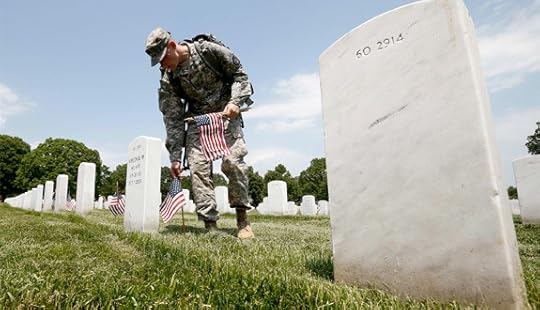The Longest Battle

A member of the Third U.S. Infantry Regiment places flags on graves in Section 60 during a "Flags-In" ceremony May 22 at Arlington National Cemetery near Washington. The soldiers placed American flags in front of more than 220,000 graves. (CNS photo/Kevin Lamarque, Reuters)
The Longest Battle | John Burger | CWR
Veterans struggle in aftermath of recent wars, but friendship and structures of faith help the process of healing
Post-traumatic stress. Amputations and brain injuries. High suicide rates. Can any good news come out of the Iraq and Afghanistan wars?
The effects of our recent military engagements in the Middle East are long-lasting. Though today’s veterans come home to a friendlier reception than their Vietnam-era forebears had, thousands of men and women who served in Operation Enduring Freedom and Operation Iraqi Freedom carry scars physical, mental, emotional, and spiritual that are deep and abiding.
Will they recover? Can they recover? What can be done for them? Is the Veterans Affairs (VA) system adequate? Is spiritual help being offered for those who need it? What difference is it making?
As America celebrates another Memorial Day and Congress questions whether the VA system of medical centers is doing enough, the veterans who have served this country continue to fight a battle—often a tough one—to reintegrate into “normal” American life.
The Unseen War
According to some, problems like post-traumatic stress disorder (PTSD) and suicide among veterans have gone through the roof.USA Today reported that 50,000 new veterans were diagnosed with PTSD during 2012. That figure reflects little progress over the previous four years: a 2008 RAND Corporationstudy estimated that approximately 20 percent of returning active duty troops—about 300,000 of the 1.64 million who served in the recent wars—suffer from PTSD, accompanied by major depression.
Suicide is another issue.
Carl E. Olson's Blog
- Carl E. Olson's profile
- 20 followers



